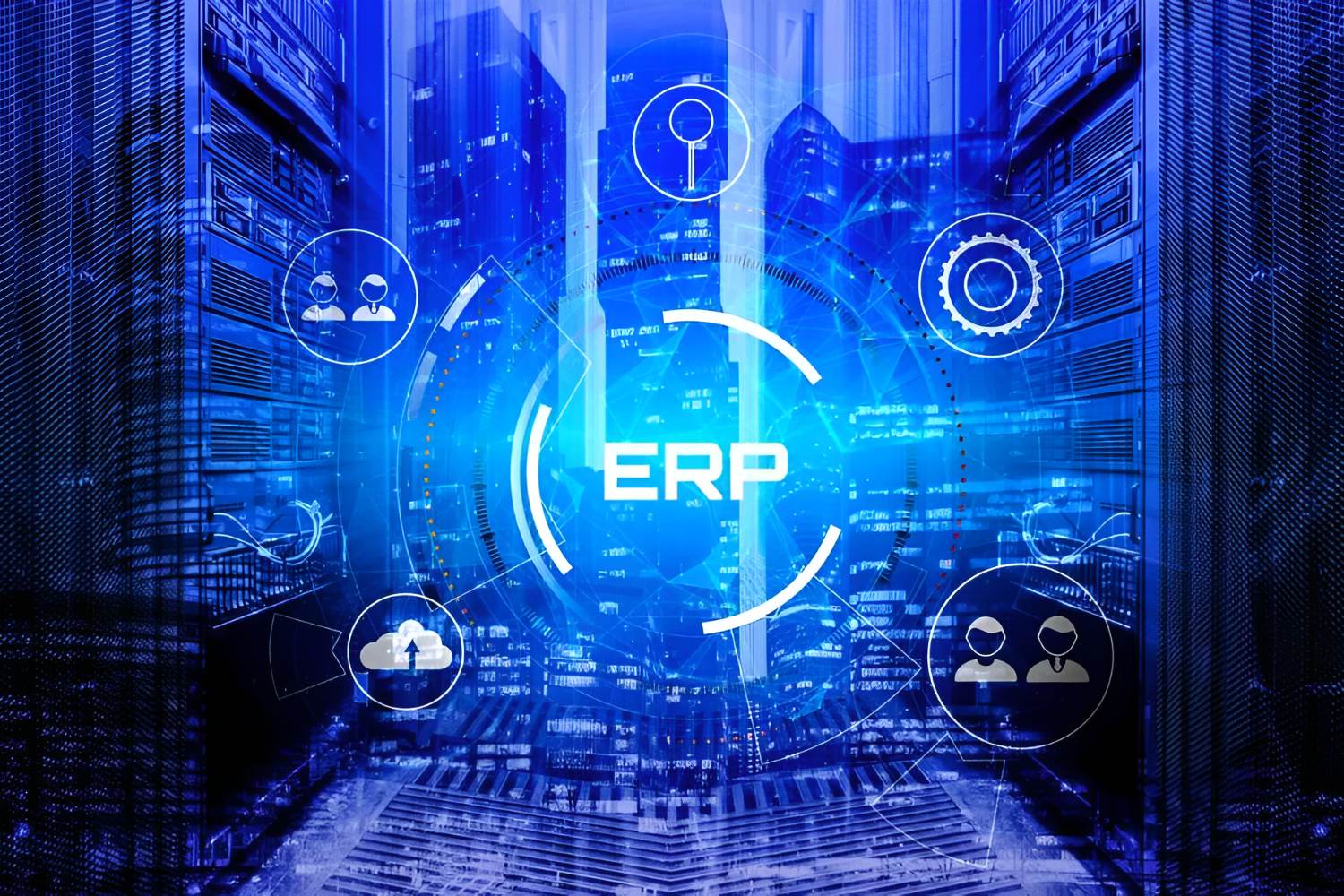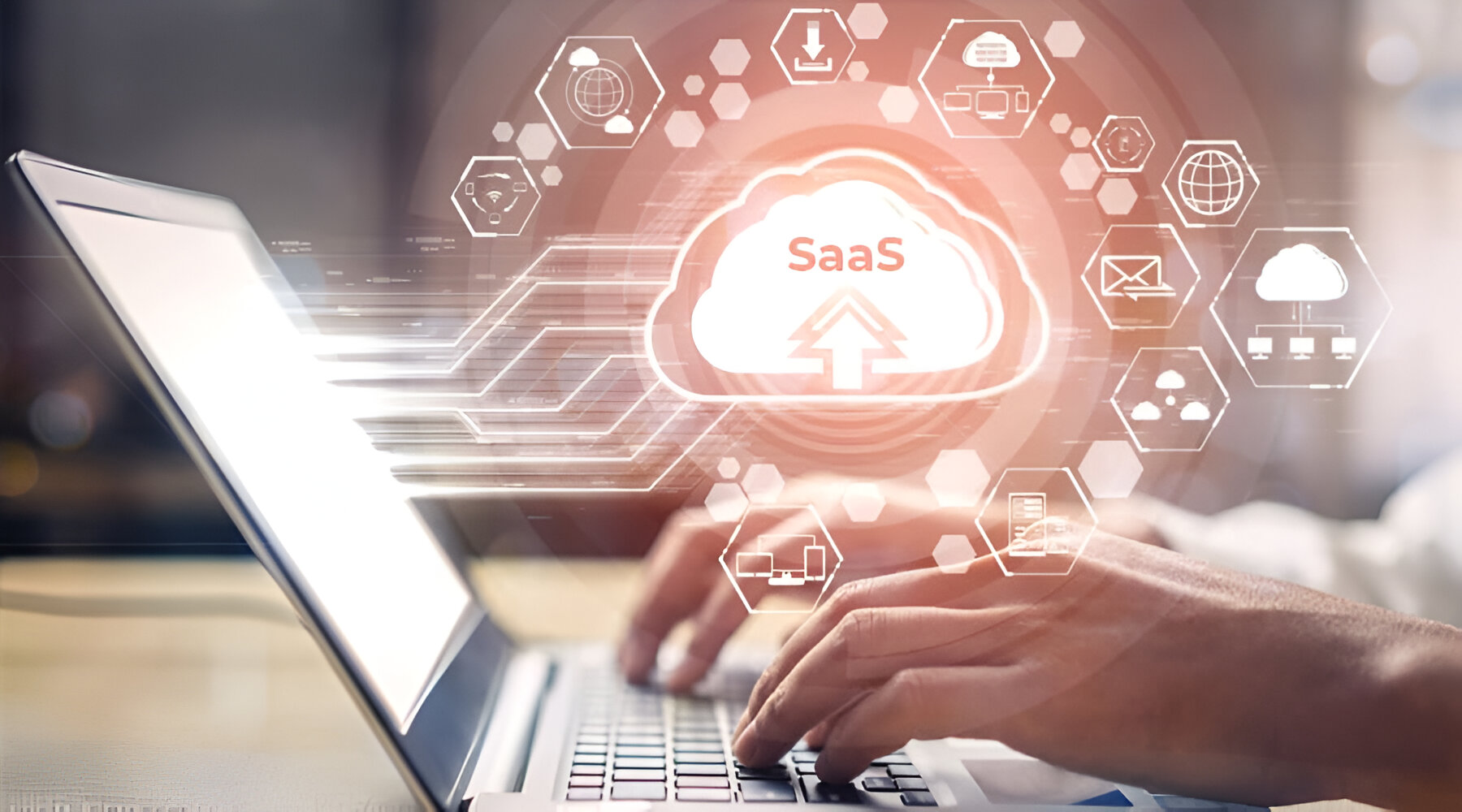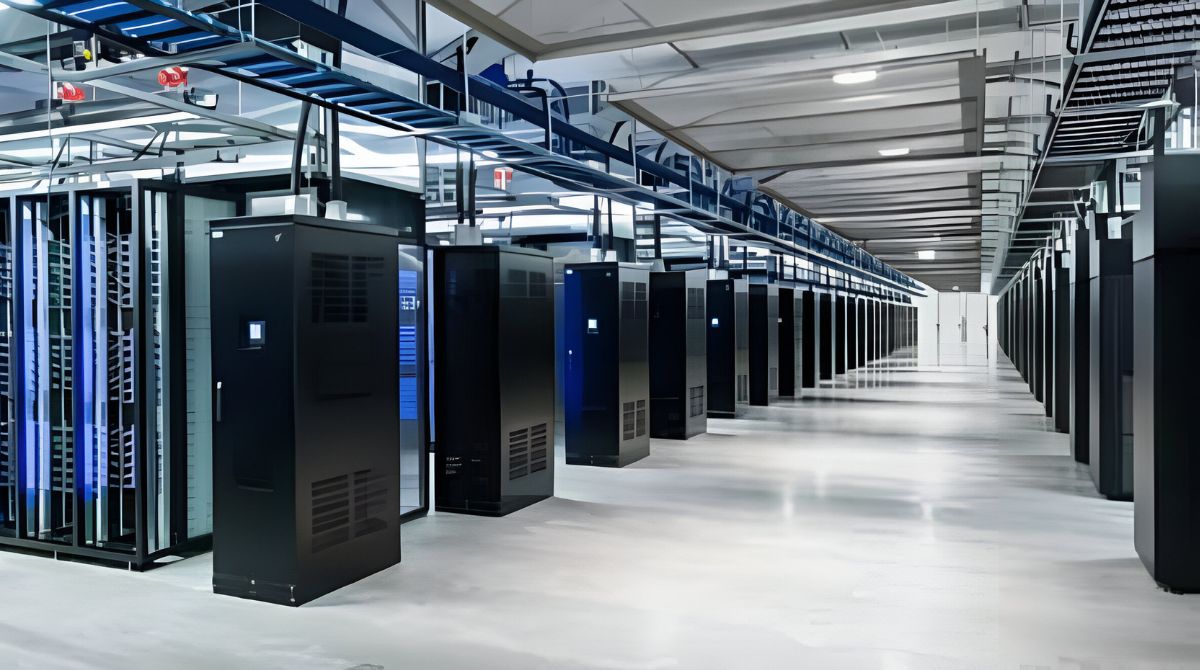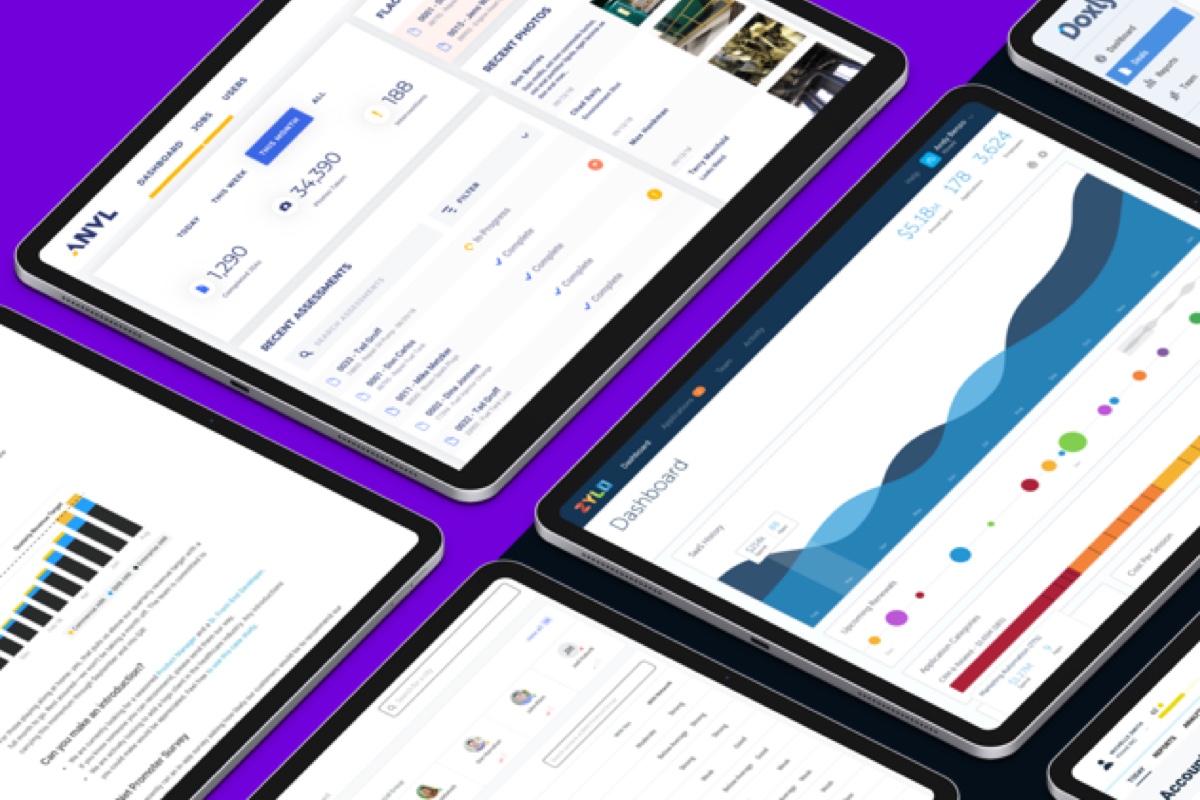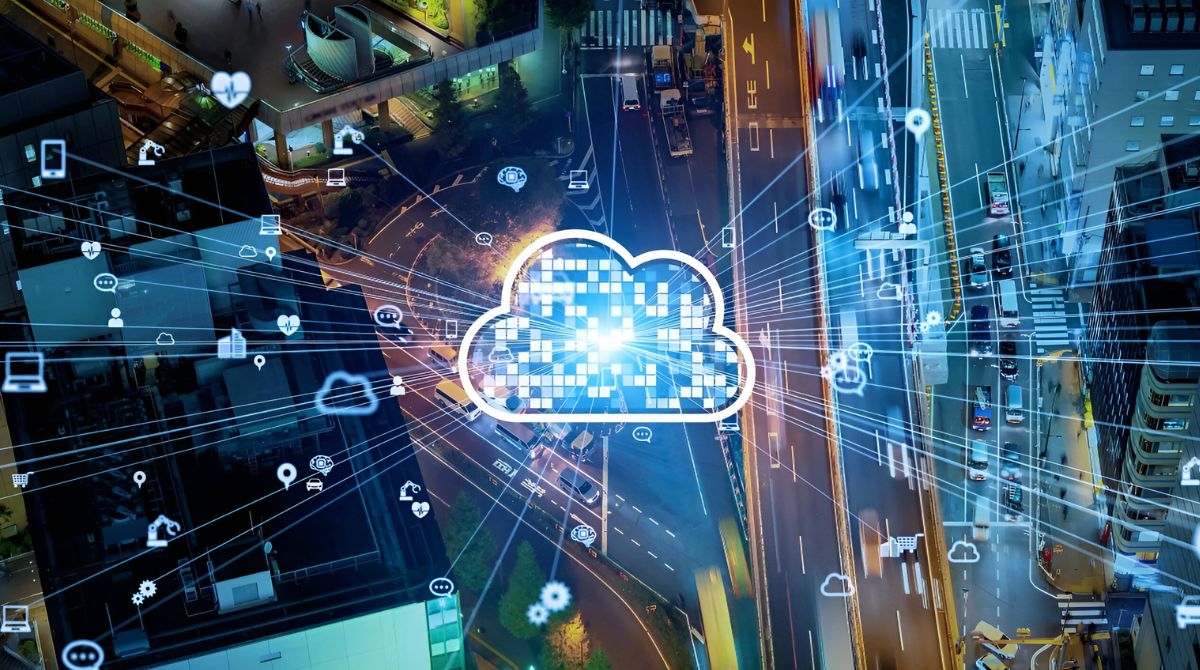Introduction
SaaS ERP, also known as Software as a Service Enterprise Resource Planning, has emerged as a game-changer in the world of business technology. It offers an innovative and flexible approach to managing various aspects of a company’s operations, from finance to supply chain management. As businesses strive to keep up with the rapidly evolving digital landscape, the demand for efficient and cost-effective ERP solutions has skyrocketed.
SaaS ERP is a cloud-based software solution that allows organizations to access and manage their core business processes through a web browser. Unlike traditional on-premise ERP systems, SaaS ERP eliminates the need for complex infrastructure and hardware investments.
With SaaS ERP, users can enjoy the benefits of a fully integrated and scalable platform that streamlines workflows, improves collaboration, and enhances decision-making. The software is typically offered as a subscription-based service, allowing businesses to pay for the services they need without the burden of large upfront costs.
One of the key advantages of SaaS ERP is its ease of implementation. The software is pre-configured and ready to use, reducing the need for extensive IT resources and expertise. This allows businesses to get up and running quickly, minimizing downtime and maximizing productivity.
Furthermore, SaaS ERP offers a high level of accessibility and mobility. As long as users have an internet connection, they can access the system from anywhere, at any time, using any device. This flexibility enables remote work and empowers employees to stay connected and productive while on the go.
In this article, we will delve deeper into the world of SaaS ERP, exploring its definition, key features, advantages, and disadvantages. We will also compare it to on-premise ERP solutions and highlight some popular SaaS ERP software options in the market today.
Definition of SaaS ERP
SaaS ERP, or Software as a Service Enterprise Resource Planning, is a cloud-based software solution that integrates various core business functions into a single system. It provides organizations with a comprehensive suite of tools to manage processes such as finance, human resources, supply chain, sales, and customer relationship management.
Unlike traditional on-premise ERP systems, where the software is installed and maintained locally on company servers, SaaS ERP operates through the cloud. This means that the software and data are hosted on remote servers and accessed through a web browser.
The key characteristic of SaaS ERP is its subscription-based model. Instead of purchasing the software outright, businesses pay a monthly or annual fee to use the system. This fee covers the licensing, maintenance, and upgrades of the software, eliminating the need for large upfront investments in hardware and infrastructure.
SaaS ERP offers a range of benefits to businesses of all sizes. Firstly, it provides scalability and flexibility, allowing organizations to easily adjust their usage as their needs change. This flexibility is particularly useful for growing businesses that require a scalable solution to accommodate increasing demands.
Another advantage of SaaS ERP is its rapid implementation and deployment process. Since the software is pre-configured and hosted in the cloud, businesses can get up and running quickly without the need for extensive IT resources and expertise. It also reduces the risk of disruptions and downtime during the implementation phase.
Additionally, SaaS ERP offers high accessibility and mobility. Users can access the system from any location, at any time, as long as they have an internet connection. This enables remote work, collaboration among teams in different locations, and facilitates real-time data access and updates.
Furthermore, SaaS ERP systems are known for their regular updates and maintenance. The software provider takes care of system updates, bug fixes, and security patches, ensuring that businesses always have access to the latest features and enhancements without the need for manual installations.
In summary, SaaS ERP is a cloud-based software solution that provides organizations with an integrated platform to manage various business processes. With its subscription-based model, scalability, rapid implementation, and accessibility, SaaS ERP offers a compelling alternative to traditional on-premise ERP systems.
Key Features of SaaS ERP
SaaS ERP offers a wide range of features designed to streamline and optimize business processes. These features provide organizations with the tools they need to effectively manage their operations and make informed decisions. Let’s explore some of the key features of SaaS ERP:
- Integrated Modules: SaaS ERP combines various modules into a single unified system, allowing different departments to collaborate and share data seamlessly. Modules may include finance, human resources, supply chain, inventory management, manufacturing, sales, and customer relationship management (CRM).
- Real-time Data Visibility: SaaS ERP provides real-time access to data, enabling users to monitor key metrics, generate reports, and gain valuable insights into the health of their business. This up-to-date information allows for better decision-making and helps identify areas for improvement.
- Scalability: SaaS ERP systems are designed to be scalable, allowing businesses to easily adjust their usage as their needs change. Whether the organization is expanding, downsizing, or introducing new processes, the software can accommodate these changes without significant disruptions.
- Customization: SaaS ERP solutions often offer customization options to tailor the software to the specific needs and workflows of the organization. This flexibility allows businesses to align the system with their unique processes and requirements, enhancing operational efficiency.
- Automated Workflows: SaaS ERP automates repetitive tasks and workflows, reducing manual effort and increasing efficiency. This automation can include functions such as invoice processing, purchase order generation, inventory management, payroll processing, and more.
- Collaboration Tools: SaaS ERP platforms provide collaboration tools that enable employees to communicate, share documents, and collaborate on projects within the system. This feature promotes teamwork, improves productivity, and enhances communication across departments.
- Mobile Access: Many SaaS ERP systems offer mobile applications or responsive web interfaces, allowing users to access the software and perform tasks on their smartphones or tablets. This mobility provides flexibility and empowers employees to work on the go.
- Data Security: SaaS ERP vendors prioritize data security and implement robust security measures to protect sensitive business information. This includes features such as data encryption, user access controls, regular backups, and disaster recovery plans.
- Analytics and Reporting: SaaS ERP solutions often incorporate advanced analytics and reporting tools, enabling businesses to analyze trends, generate forecasts, and create detailed reports. These insights facilitate data-driven decision-making and help identify areas for improvement.
These key features of SaaS ERP contribute to the overall efficiency, productivity, and effectiveness of an organization. By leveraging these capabilities, businesses can streamline their operations, enhance collaboration, and achieve better visibility and control over their business processes.
Advantages of SaaS ERP
SaaS ERP offers numerous advantages over traditional on-premise ERP systems. These advantages make it an attractive choice for businesses looking to streamline their operations and maximize efficiency. Let’s explore some of the key advantages of SaaS ERP:
- Cost-effective: SaaS ERP eliminates the need for large upfront investments in hardware and infrastructure. Instead, businesses pay a subscription fee based on their usage, making it a cost-effective solution for organizations of all sizes. Additionally, maintenance, updates, and support are typically included in the subscription fee, further reducing costs.
- Rapid Implementation: SaaS ERP systems are pre-configured and ready to use, significantly reducing the implementation time compared to on-premise solutions. Businesses can get up and running quickly, saving time and minimizing disruptions to their operations.
- Scalability and Flexibility: SaaS ERP systems are designed to scale with the needs of the business. Organizations can easily add or remove users, modules, or features as their requirements change. This scalability and flexibility allow businesses to adapt to growth, changes in demand, and emerging industry trends.
- Accessibility and Mobility: SaaS ERP can be accessed from anywhere, at any time, as long as there is an internet connection. This accessibility promotes remote work and enables employees to stay connected and productive while on the go. Mobile applications and responsive web interfaces further enhance the mobility of SaaS ERP solutions.
- Automatic Updates and Maintenance: SaaS ERP providers handle system updates, bug fixes, and security patches. This relieves businesses of the burden of manual updates and ensures that they always have access to the latest features and enhancements without any additional effort.
- Collaboration and Data Sharing: SaaS ERP systems facilitate collaboration and data sharing among different departments and teams. It provides a centralized platform where employees can securely share information and collaborate on projects, fostering communication, efficiency, and productivity.
- Security and Data Protection: SaaS ERP vendors prioritize data security and implement robust measures to protect sensitive business information. They employ encryption, user access controls, regular backups, and disaster recovery plans to ensure the confidentiality, integrity, and availability of data.
- Continuous Support and Customer Service: SaaS ERP providers offer ongoing support and customer service to assist businesses with any issues or questions they may have. This ensures that businesses have access to expert assistance to optimize their usage of the software and overcome any challenges.
These advantages make SaaS ERP an appealing choice for businesses seeking a cost-effective, scalable, and accessible solution to manage their operations. With its rapid implementation, automatic updates, and focus on security and collaboration, SaaS ERP can significantly enhance efficiency, decision-making, and overall business performance.
Disadvantages of SaaS ERP
While SaaS ERP offers numerous advantages, it is important to consider its potential disadvantages before implementing the system. Understanding these drawbacks can help businesses make informed decisions and mitigate any challenges that may arise. Let’s explore some of the key disadvantages of SaaS ERP:
- Data Security Concerns: Storing sensitive business data in the cloud can raise concerns regarding data security and confidentiality. While SaaS ERP vendors prioritize data protection, businesses must evaluate the security measures implemented by the vendor and ensure that they align with their unique security requirements.
- Dependence on Internet Connectivity: SaaS ERP systems heavily rely on internet connectivity. If the internet connection is unreliable or experiences downtime, it can hinder access to the system and disrupt business operations. Businesses must have contingency plans in place to mitigate these risks.
- Limited Customization: While SaaS ERP solutions offer some level of customization, it may not fully accommodate all the unique processes and requirements of every business. Organizations may need to adjust their workflows to fit within the constraints of the system, leading to potential compromises in efficiency and flexibility.
- Vendor Dependence: Businesses relying on a SaaS ERP solution are dependent on the vendor for maintenance, updates, and support. If the vendor experiences financial instability or discontinues the product, it can pose risks to the business. Careful vendor evaluation and contract negotiation are crucial to mitigate these risks.
- Data Accessibility Concerns: In a cloud-based system, businesses rely on the provider’s infrastructure and connectivity to access their data. This reliance can lead to concerns regarding data accessibility during outages, service interruptions, or if the provider faces technical difficulties.
- Long-term Cost Implications: While SaaS ERP solutions are generally cost-effective in the short term, businesses should consider the long-term costs involved. As the organization grows and requires additional users or functionalities, the subscription costs may increase over time.
- Limited Control Over System Updates: SaaS ERP providers control system updates and enhancements. While this relieves businesses of the burden of manual updates, it can also mean that organizations have little control over when and how updates are implemented. Compatibility issues and changes in functionality can occur with system updates, requiring businesses to adjust their processes accordingly.
- Data Portability: Transferring data from one SaaS ERP system to another or to an on-premise system can be challenging. Businesses must consider data portability and the ease of migrating data in case they decide to switch providers or move to a different solution in the future.
Despite these disadvantages, many businesses find that the benefits of SaaS ERP outweigh the potential drawbacks. By carefully evaluating their specific needs and considering these challenges, organizations can make an informed decision and implement measures to mitigate any potential risks.
SaaS ERP vs On-Premise ERP
When considering an ERP system, businesses often face the decision between SaaS ERP and on-premise ERP. Each approach offers unique advantages and considerations that organizations must evaluate based on their specific needs and circumstances. Let’s compare SaaS ERP and on-premise ERP to better understand the differences:
- Deployment: SaaS ERP is cloud-based, meaning the software and data are hosted on remote servers and accessed through a web browser. On the other hand, on-premise ERP requires the software to be installed and maintained locally on the company’s own servers.
- Cost: SaaS ERP operates on a subscription-based model, allowing businesses to pay a monthly or annual fee based on usage. This eliminates the need for large upfront investments in hardware and infrastructure. On-premise ERP requires upfront costs for server hardware, software licenses, maintenance, and ongoing IT support.
- Implementation: SaaS ERP systems are pre-configured and ready to use, enabling faster implementation compared to on-premise ERP systems that often require extensive customization and configuration. SaaS ERP can be up and running quickly, reducing downtime and disruptions.
- Scalability: SaaS ERP provides scalability and flexibility, allowing businesses to easily add or remove users and modules based on their needs. On-premise ERP may require additional hardware and infrastructure investments to accommodate growth or changes in demand.
- Accessibility: SaaS ERP offers high accessibility and mobility since it can be accessed through a web browser from anywhere with an internet connection. On-premise ERP systems may require a virtual private network (VPN) or remote desktop connection to access the system outside the company’s premises.
- Maintenance and Updates: SaaS ERP vendors handle system updates, maintenance, and security patches, ensuring businesses have access to the latest features. On-premise ERP systems require in-house IT resources to manage system updates, backups, and maintenance.
- Customization: SaaS ERP solutions may offer limited customization options to fit unique business processes compared to on-premise ERP systems that can be highly customized. However, extensive customization in an on-premise ERP can lead to higher costs and longer implementation times.
- Data Security: SaaS ERP vendors prioritize data security and implement robust measures to protect sensitive information. On-premise ERP systems can provide enhanced control over data security since the company maintains full ownership and management of the infrastructure.
- Vendor Dependence: SaaS ERP involves vendor dependence, as businesses rely on the vendor for software updates, support, and availability. On-premise ERP systems provide more control and ownership, but require self-reliance for system management and updates.
Ultimately, the choice between SaaS ERP and on-premise ERP depends on factors such as budget, scalability needs, customization requirements, and security preferences. Both options have their strengths and considerations, and businesses should carefully evaluate their unique needs to determine the best fit for their organization.
Popular SaaS ERP Solutions
With the increasing popularity and demand for SaaS ERP solutions, numerous vendors have emerged in the market. These vendors offer a variety of options tailored to the unique needs of different industries and organizations. Here are some of the popular SaaS ERP solutions available:
- NetSuite: NetSuite, a cloud-based ERP solution owned by Oracle, offers a comprehensive suite of ERP tools ranging from financial management and supply chain management to CRM and e-commerce. It is widely recognized for its scalability, flexibility, and industry-specific functionality.
- SAP S/4HANA Cloud: SAP S/4HANA Cloud provides end-to-end ERP capabilities, enabling businesses to streamline their operations with modules such as finance, procurement, sales, inventory management, and more. It leverages the power of artificial intelligence, machine learning, and predictive analytics for smarter decision-making.
- Microsoft Dynamics 365: Microsoft Dynamics 365 offers a suite of cloud-based business applications, including ERP functionalities. It integrates seamlessly with other Microsoft products and provides modules for finance and operations, supply chain management, retail, and customer service.
- Workday: Workday is a leading SaaS ERP solution focused on human capital management (HCM) and financial management. It offers features for managing HR processes, payroll, time tracking, expense management, and financial planning, providing a unified platform for workforce and financial management.
- Infor CloudSuite: Infor CloudSuite delivers industry-specific ERP solutions for sectors such as manufacturing, distribution, healthcare, and hospitality. It offers a range of modules to optimize operations, including finance, supply chain management, human resources, and customer management.
- Plex: Plex is a cloud-based ERP solution specializing in manufacturing and industrial automation. It provides features for managing processes such as inventory control, production planning, quality management, and shop floor operations, ensuring efficient operations throughout the manufacturing supply chain.
- Epicor ERP: Epicor ERP caters to industries such as manufacturing, distribution, retail, and services. It offers comprehensive modules for managing finance, inventory, production, sales, and customer relationship management. Epicor ERP focuses on supporting growth, innovation, and improving customer experiences.
These are just a few examples of the popular SaaS ERP solutions available in the market. It is important for businesses to carefully evaluate their specific needs, industry requirements, pricing, scalability, and customer reviews to select the most suitable SaaS ERP solution for their organization.
Conclusion
SaaS ERP has revolutionized the way businesses manage their operations, offering a flexible, cost-effective, and scalable solution. By eliminating the need for complex infrastructure and upfront investments, SaaS ERP enables organizations of all sizes to streamline their processes and leverage the benefits of cloud-based technology.
Throughout this article, we explored the definition of SaaS ERP and its key features, advantages, and disadvantages. We also compared SaaS ERP to on-premise ERP to help businesses understand the differences between the two approaches. Additionally, we highlighted some popular SaaS ERP solutions available in the market.
SaaS ERP offers numerous advantages, including cost-effectiveness, rapid implementation, scalability, accessibility, automatic updates, and collaboration capabilities. However, businesses should be mindful of potential drawbacks such as data security concerns, reliance on internet connectivity, limited customization, and dependence on vendors.
Ultimately, the selection of a SaaS ERP solution depends on the specific needs and requirements of the organization. Companies should carefully evaluate factors such as budget, scalability, customization, data security, and long-term goals before making a decision.
As technology continues to evolve, SaaS ERP is expected to play an increasingly vital role in empowering businesses to streamline their operations, make data-driven decisions, and adapt to the ever-changing business landscape. By leveraging the advantages and understanding the challenges of SaaS ERP, organizations can position themselves for success in the modern digital era.







